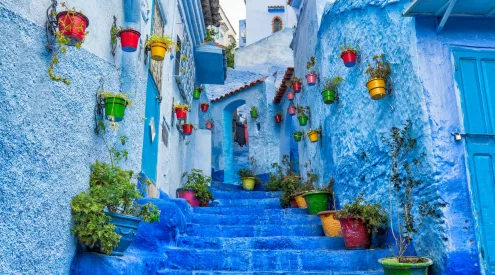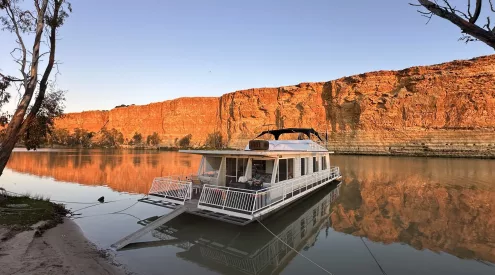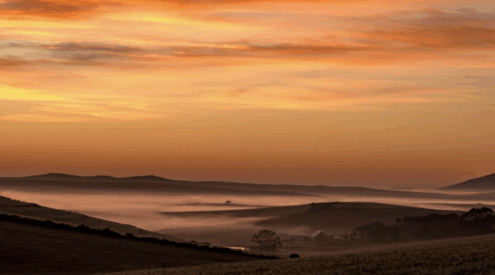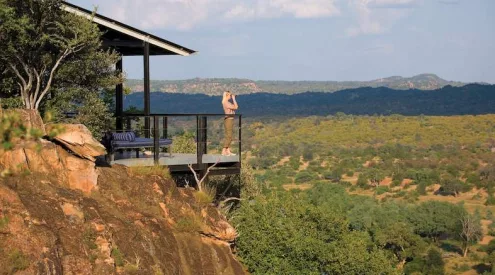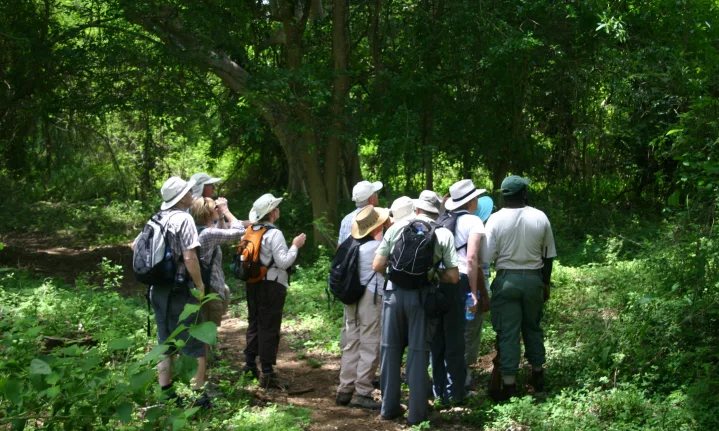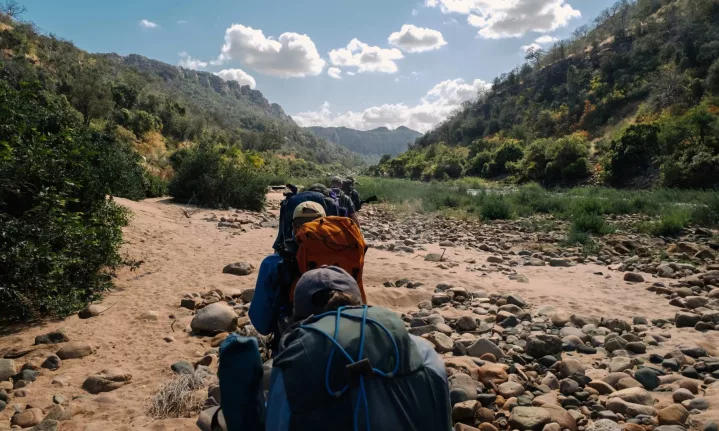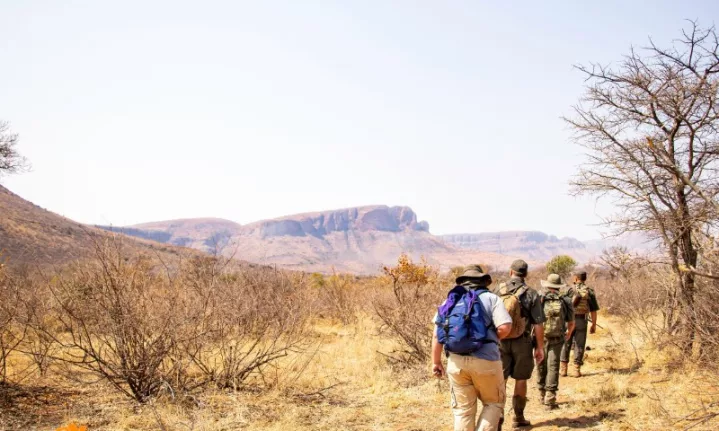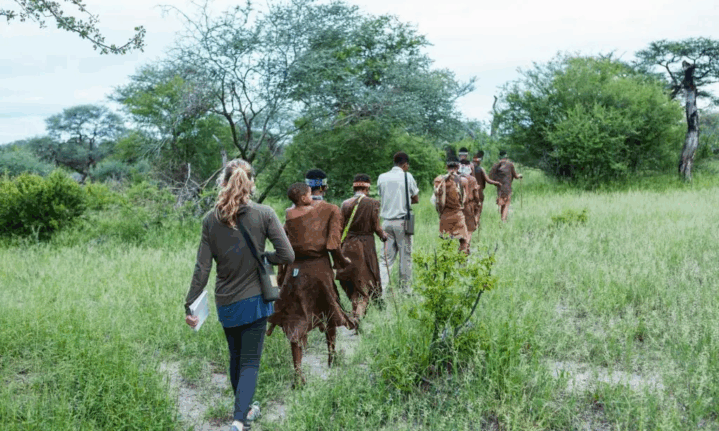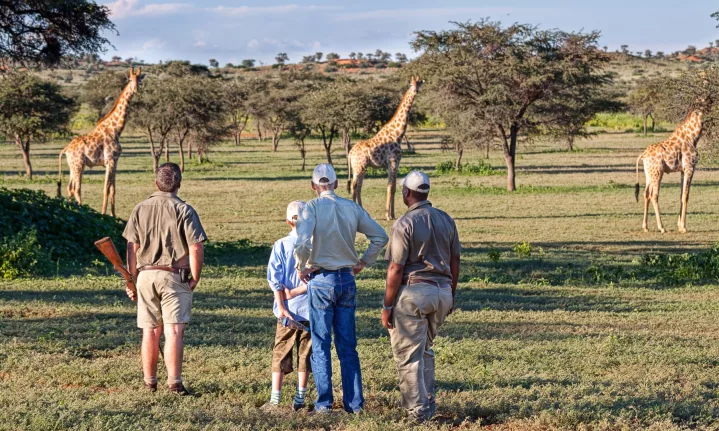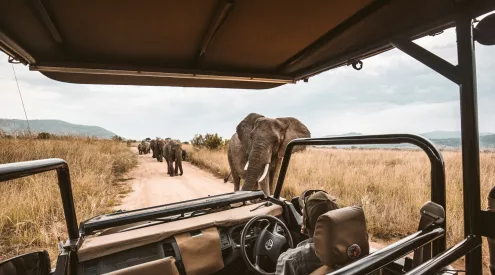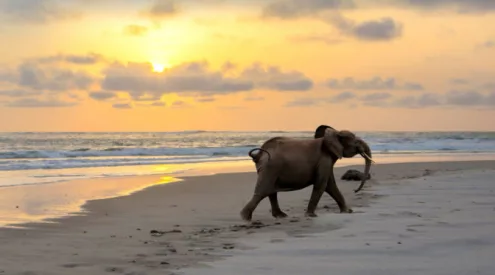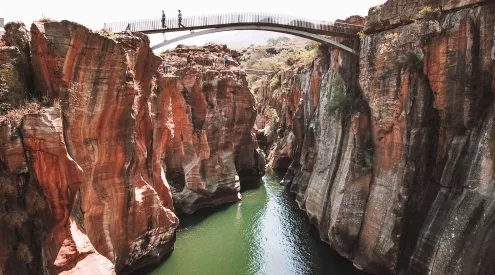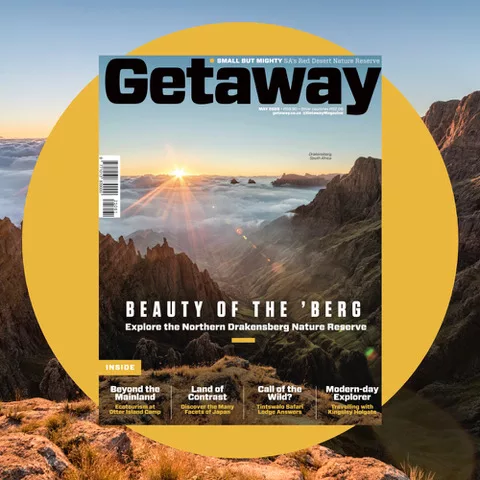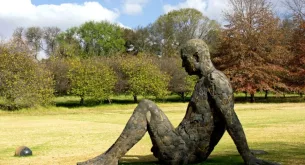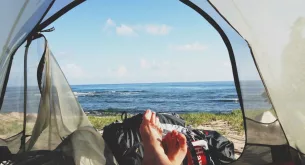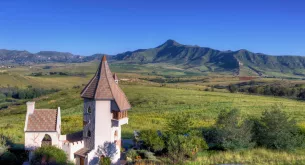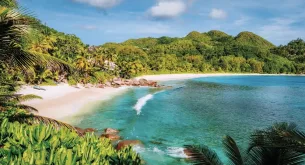There’s a primal thrill in stepping into the wild on foot. Without the barrier of a game vehicle, every sense sharpens—the earthy scent of wild sage, the snap of twigs underfoot, the echo of a lion’s call in the distance. In South Africa, walking safaris offer a stripped-back, immersive connection to nature. And the best part? Many of the most memorable trails lie well beyond the beaten path.
Why choose a walking safari?
Unlike game drives, where you passively observe from behind a window, walking safaris place you in the landscape. You’ll track prints in the sand, learn how to interpret dung piles, and maybe lock eyes with a curious giraffe—all with a qualified guide leading the way. It’s slower, quieter, and surprisingly profound.
Lesser-known reserves that offer walking safaris
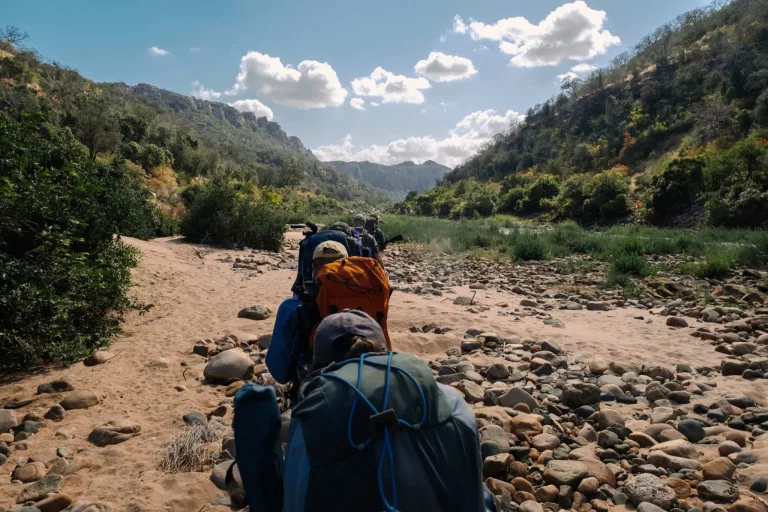
Picture/Lowveld Trails
Makuya Nature Reserve – Limpopo
Perched on the edge of northern Kruger, Makuya shares the same ecosystems and Big Five potential, but with a fraction of the crowds. Here, Venda culture and conservation intertwine—local guides lead walking trails that wind through mopane woodlands and baobab-studded hills, often with breathtaking views over the Luvuvhu River.
Why it’s special: Remote, culturally rich, and ideal for spotting elephants and buffalo on foot.
uMkhuze Game Reserve – KwaZulu-Natal
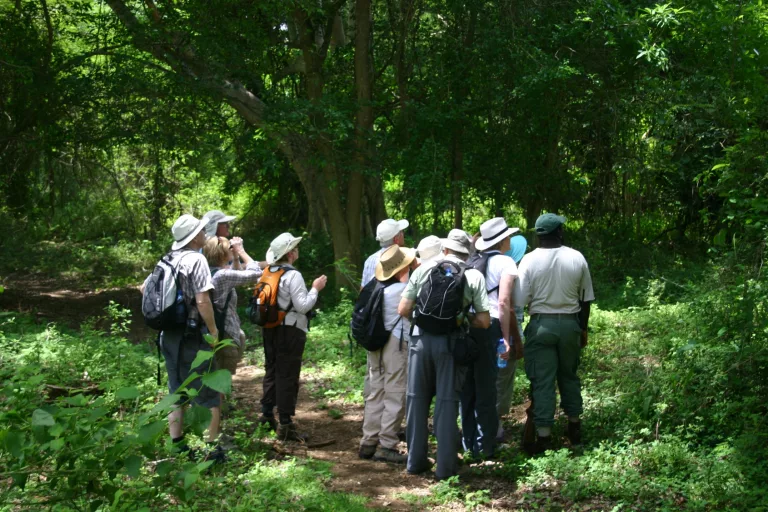
Picture/Ghost Mountain Inn
Part of the iSimangaliso Wetland Park, uMkhuze is a birder’s paradise, but its guided walking trails are just as rewarding. Think sand forests, ancient fig trees, and watering holes where nyala, kudu and warthog quietly roam.
Why it’s special: Walks through rare fig forests and strong chances of seeing black rhino in the wild.
ALSO READ: 7 Great drive-out tours along KwaZulu-Natal’s South Coast
Marakele National Park – Waterberg
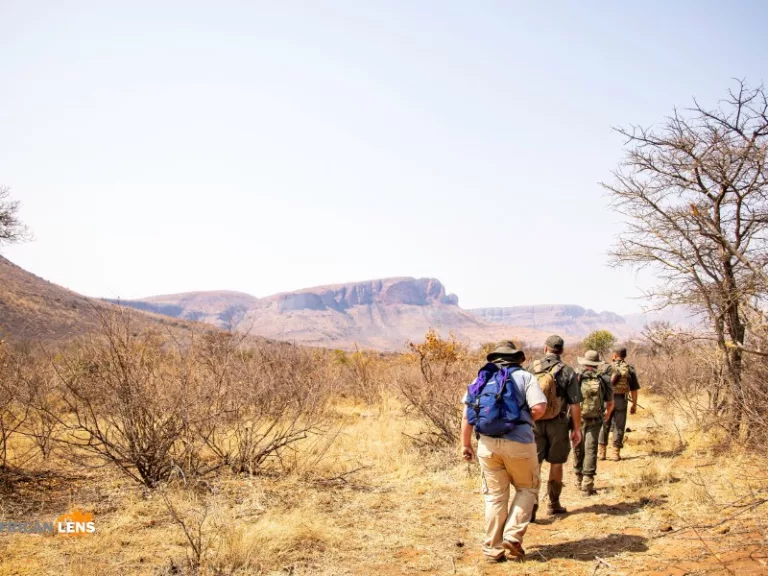
Picture/SANParks Honorary Rangers
Tucked into the Waterberg Biosphere, Marakele is a land of contrasts—towering mountains, deep valleys, and lush bushveld. The park offers guided rhino-tracking walks that are thrilling yet carefully managed, giving guests a glimpse into crucial conservation work.
Why it’s special: Dramatic scenery and close encounters with rhinos.
Kgalagadi Transfrontier Park – Northern Cape
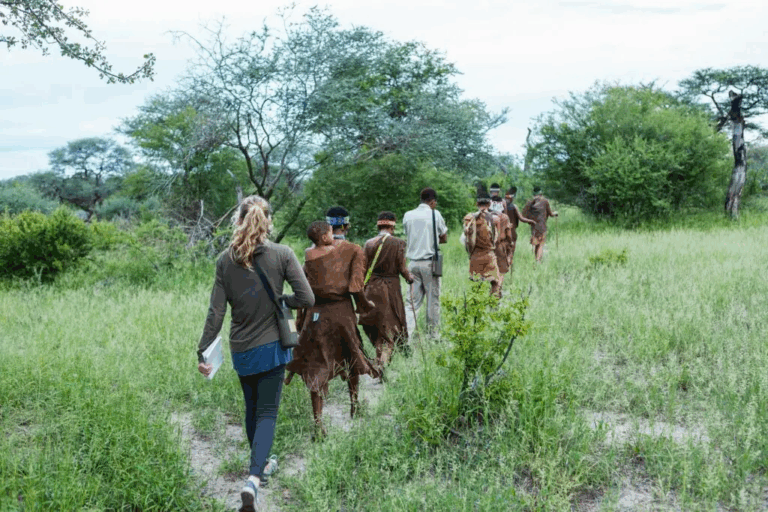
Picture/Safari365
Famous for its red dunes and big skies, the Kgalagadi may not scream “walking safari” at first glance—but certain wilderness camps allow for short, guided walks around camp perimeters, especially in predator-light areas.
Why it’s special: Stark desert beauty, meerkat sightings, and fewer crowds.
Tswalu Kalahari Reserve – Northern Cape

Picture/andBeyond
If you’re after something ultra-exclusive, Tswalu offers fully tailored walking safaris through its arid savannahs. From aardvark to pangolin, the wildlife here is rare, and expert guides help guests interpret the subtle signs of life in the desert.
Why it’s special: High-end luxury with a serious conservation ethos.
What to pack for a walking safari
Even short walks can feel more intense under the African sun. Here’s what to bring for comfort and safety:
- Neutral, lightweight long-sleeved shirts and trousers
- Sturdy, well-worn walking boots
- Daypack with hydration bladder or water bottle
- Wide-brimmed hat and high-SPF sunscreen
- Insect repellent (especially in summer)
- Binoculars and a camera (with strap and muted colours)
- Personal ID and any medical information
- Basic first-aid supplies (blister plasters, antihistamines, etc.)
Safety First: Key guidelines for walking safaris
Walking safaris are perfectly safe when done with a trained guide, but this isn’t the time for rule-breaking. Stay alert and follow these basic principles:
Never walk without a certified armed guide. Their training in animal behaviour and safety protocols is what keeps you safe.
Walk in a single file to reduce your profile and follow the guide’s lead.
No loud talking or sudden movements. The bush is listening.
Never run from wildlife, even during a bluff charge. Stay calm and still unless instructed otherwise.
Be upfront about your health and fitness. Guides can adapt the pace and distance accordingly.
Stick to the group. Wandering off is both dangerous and disrespectful to the natural order.
Follow us on social media for more travel news, inspiration, and guides. You can also tag us to be featured.
TikTok | Instagram | Facebook | Twitter
ALSO READ: Why experience travel is the new luxury

